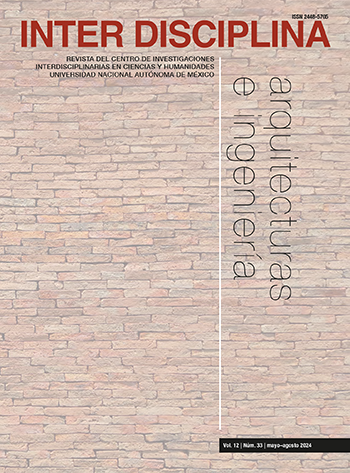Rich picture as a tool for expressing gender inequality in organizations: an approach through soft system
Main Article Content
Abstract
The rich picture of a problem situation as a tool to support the analysis processes when trying to make change interventions to create some improvement offers a viable and useful alternative to overcome the challenges faced by organizations in Mexico in the context of gender inequality. The article aims to describe what a rich picture is in soft systems methodology, the advantages and disadvantages it offers, as well as the elaboration process that was carried out to obtain a rich picture of gender inequality in organizations in the state of Hidalgo. The rich picture obtained is also described and an approach to the problem situation represented by gender inequality in organizations is proposed. The research method that guides the process is framed, on the one hand, in the qualitative paradigm, with documentary and graphic review about rich pictures and gender inequality in organizations. On the other hand, information collected through an online questionnaire is used to support the recognition of patterns. The result is a rich picture of gender inequality seen as a complex problem and it is concluded that this phase of soft systems methodology can be applicable to the study of gender inequality and facilitate intervention processes in search of awareness and improvements in management processes in organizations.
Downloads
Article Details
Citas en Dimensions Service
References
Alvarado, C. y Yanguas, A. 2012. Diseño de un experimento para medir la contribución de dos metodologías blandas: mind maps y rich pictures dentro del proceso de aprendizaje. Trabajo de grado. Universidad ICESI.
Barbrook, J. y Penn, A. S. 2022. Systems mapping: how to build and use causal models of systems. Cham: Palgrave Macmillan, 21-32. https://doi.org/10.1007/978-3-031-01919-7_2.
Berg, T. y Pooley, R. 2012. Rich pictures: a valuable means to explore complex IS issues. UK Academy for information Systems Conference Proceeding. https://aisel.aisnet.org/cgi/viewcontent.cgi?article=1000&context=ukais2012.
Berg, T. y Pooley, R. 2014. Contemporary iconography for rich picture construction. Systems Research and Behavioral Science, 30: 31-42.
Berg, T. 2015. Rich picture: the role of the facilitator. Systemic Practice and Action Research, 28(1): 67-77. https://doi.org/10.1007/s11213-014-9318-z.
Bertoglio, O. J. 1993. Introducción a la teoría general de sistemas. México: Limusa.
Brouwer, H., Woodhill, A. J., Hemmati, M., Verhoosel, K. S. y Van Vugt, S. 2015. The MSP guide: how to design and facilitate multi-stakeholder partnerships. The Netherlands: Centre for Development Innovation. University Wageningen.
Buckley, W. 1970. La sociología y la teoría moderna de los sistemas. Buenos Aires: Amorrortu.
Bunge, M. 2000. La investigación científica. México: Siglo XXI.
Camacho, María Claudia. 2012. Desigualdad en el empleo y el trabajo. En Organización de los Estados Americanos (ed.), Desigualdad e inclusión social en las Américas: 14 ensayos, 255-275. Organization of American States. Secretary General. https://archivos.juridicas.unam.mx/www/bjv/libros/10/4635/16.pdf.
Checkland, P. y Scholes, J. 1994. La metodología de los sistemas suaves de acción. México: MEGABYTE.
Checkland, P. 1989. Soft systems methodology. Human Systems Management, 8(4): 273-289.
Checkland, P. 1993. Pensamiento de sistemas, práctica de sistemas. México: Grupo Noriega Editores.
Conte K. y Davidson S. 2020. Using a ‘rich picture’ to facilitate systems thinking in research coproduction. Health Research Policy and Systems, 18(1): 1-14, https://doi.org/10.1186/s12961-019-0514-2.
García, V. 2006. La desigualdad laboral entre hombres y mujeres. En la calle: revista sobre situaciones de riesgo social, 5: 9-13.
Horan, P. 2000. Using rich pictures in information systems teaching. Conferencia presentada en ICSTM2000, International Conference on Systems Thinking in Management. Geelong, Australia (8 al 10 de noviembre).
Instituto Municipal de las Mujeres de Ciudad Juárez. 2020. Diccionario de género. Ciudad Juárez: Instituto Municipal de las Mujeres. http://immuj.gob.mx/wp-content/uploads/2020/11/Diccionario-de-Ge%CC%81nero.pdf.
Instituto Nacional de las Mujeres. 2022. Glosario para la igualdad. Ciudad de México: INMUJERES. https://campusgenero.inmujeres.gob.mx/glosario/terminos/igualdad-de-genero.
Jackson, M. 2000. Systems approaches to management. Nueva York: Kluwer Academic Publishers.
Jackson, M. 2003. Systems thinking: creative holism for managers. Yorkshire: Chichester John Wiley and Sons, Ltd.
Martínez, M. D. y Osca, A. 2004. El éxito profesional desde una perspectiva de género: propuesta de un modelo. Revista de Psicología General y Aplicada: Revista de la Federación Española de Asociaciones de Psicología, 57(2): 193-208.
Mingers, J. y White, L. 2010. A review of the recent contribution of systems thinking to operational research. European Journal of Operational Research, 207(3): 1147-1161. https://doi.org/10.1016/j.ejor.2009.12.019.
Mingers, J. 2001. Combining IS research methods: towards a pluralist methodology. Information Systems Research. 12(3): 240-259.
Monk, A. y Howard, S. 1998. The rich picture: a tool for reasoning about work content. Interactions, 5(2): 21-30. https://doi.org/10.1145/274430.274434.
ONU Mujeres. 2015. La ONU en acción para la igualdad de género en México. Bonnafé, J. y Corral, E. (eds.). México: ONU Mujeres.
ONU. 2022. Objetivos del desarrollo sostenible. https://www.un.org/sustainabledevelopment/es/objetivos-de-desarrollo-sostenible/. (Consultado, marzo 7, 2022).
ONU-Mujeres. 2022. La respuesta de ONU Mujeres a la crisis del COVID-19. https://www.unwomen.org/es/news/in-focus/in-focus-gender-equality-in-covid-19-response/un-women-response-to-covid-19-crisis. (Consultado, marzo 12, 2022).
Rittel, H. y Webber, M. 1973. Dilemmas in a general theory of planning. Policy Sciences, 4: 155- 169.
Sengupta S. S. y R. L. Ackoff. 1965. Systems theory from an operations research point of view. IEEE Transactions on Systems Science and Cybernetics, 1(1): 9-13. https://doi.org/10.1109/TSSC.1965.300053.
Shannon, R. 1998. Simulación de sistemas. México: Trillas.
Van Gigch, J. P. 2006. Teoría general de sistemas. 3a ed. México: Trillas.
Von Bertalanffy, L. 1976. Teoría general de los sistemas. México: Fondo de Cultura Económica.
Wilson, B. 1993. Sistemas: conceptos, metodología y aplicaciones. México: MEGABYTE.
Wilson, B. 2001. Soft systems methodology. Conceptual model building and its contribution. Londres: Chichester John Wiley and Sons, Ltd.

Esta obra está bajo una Licencia Creative Commons Atribución-NoComercial-SinDerivar 4.0 Internacional.

